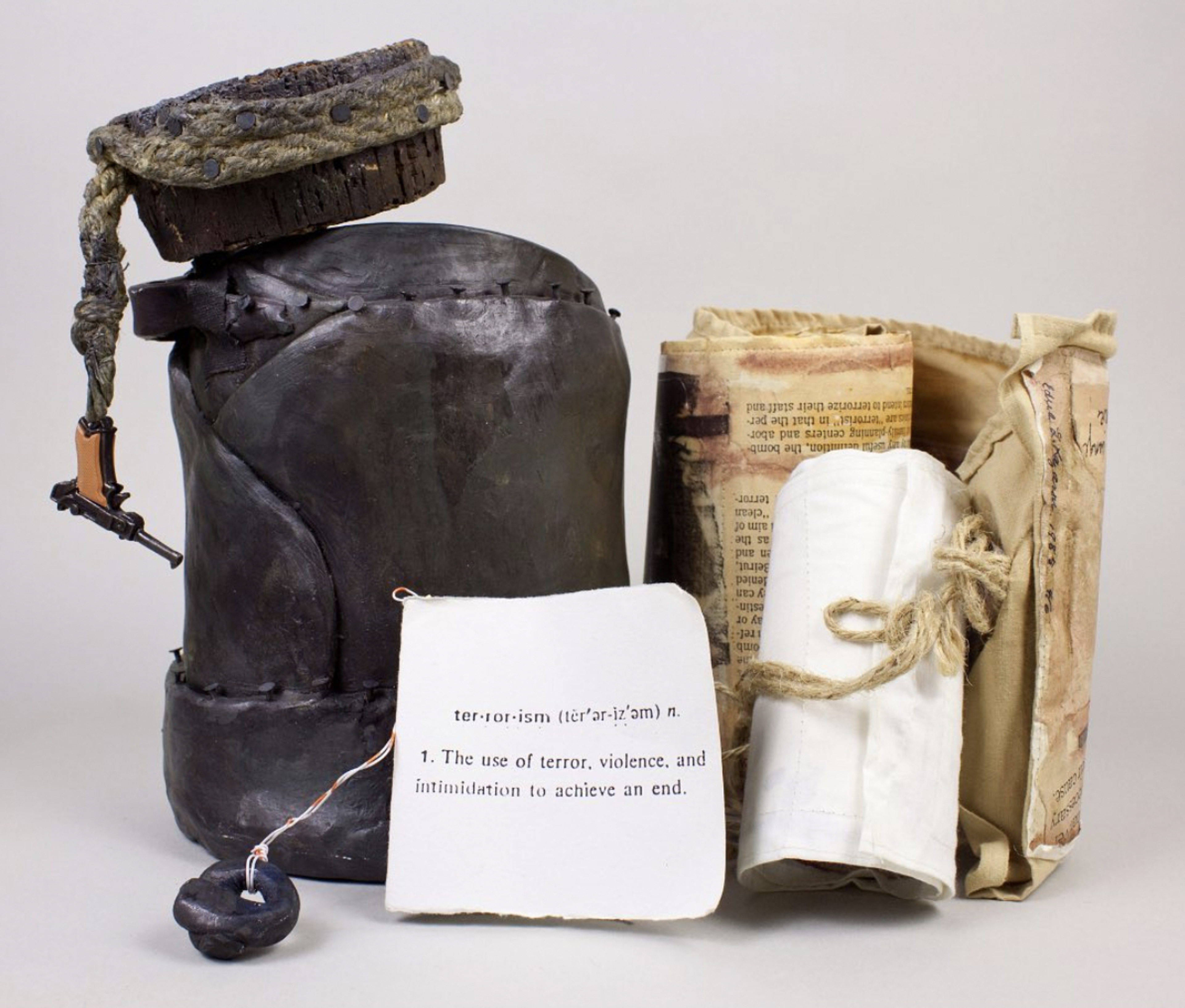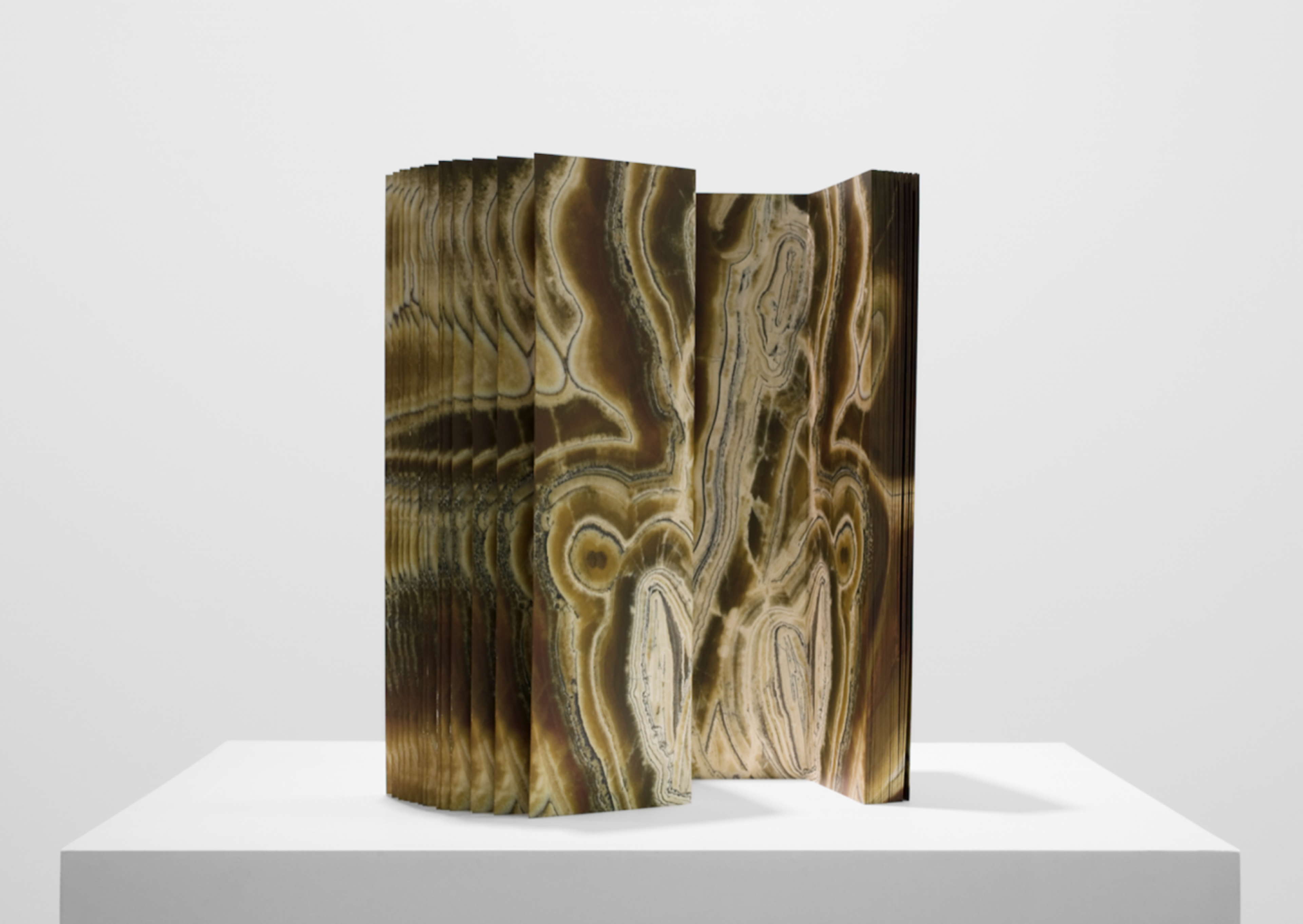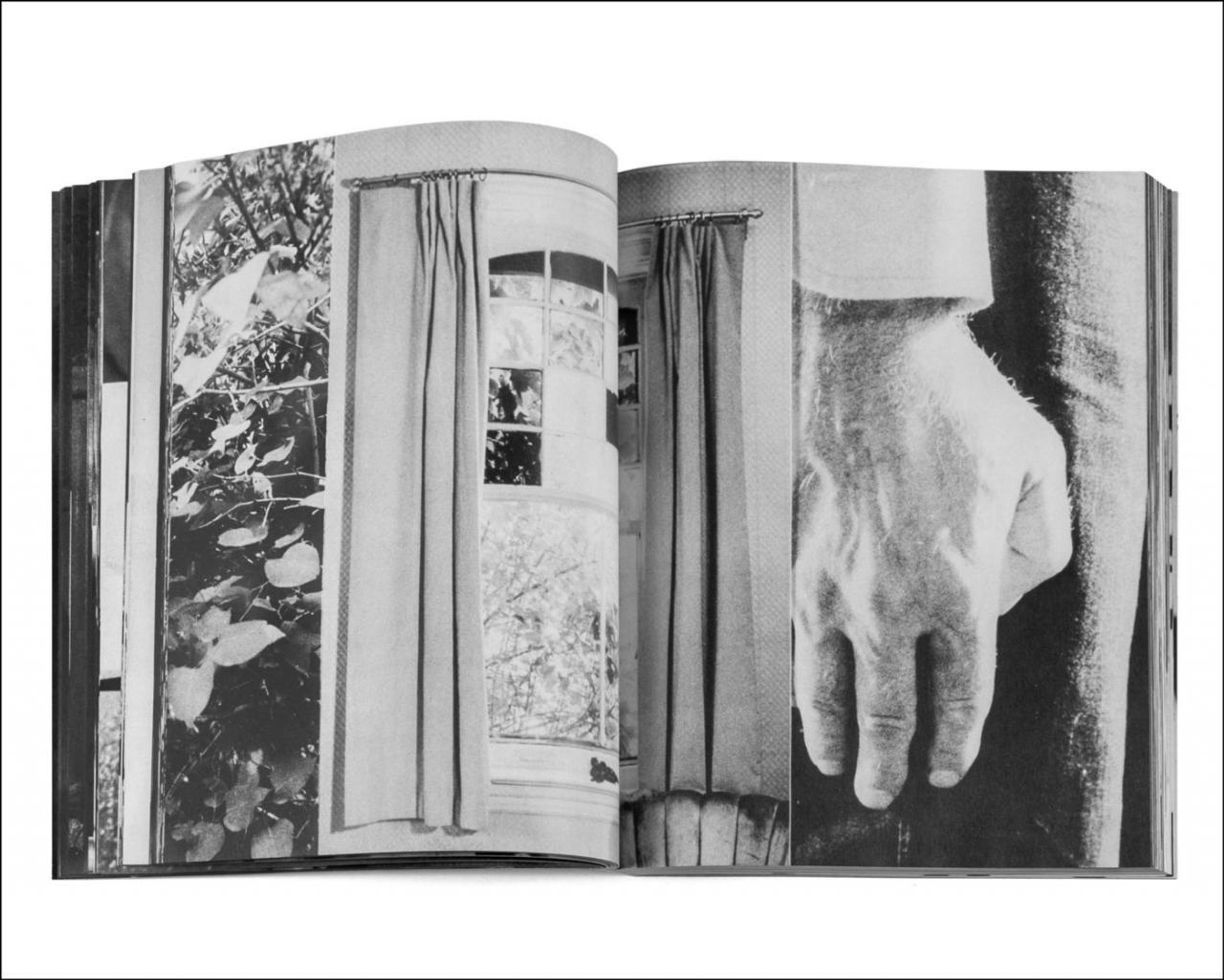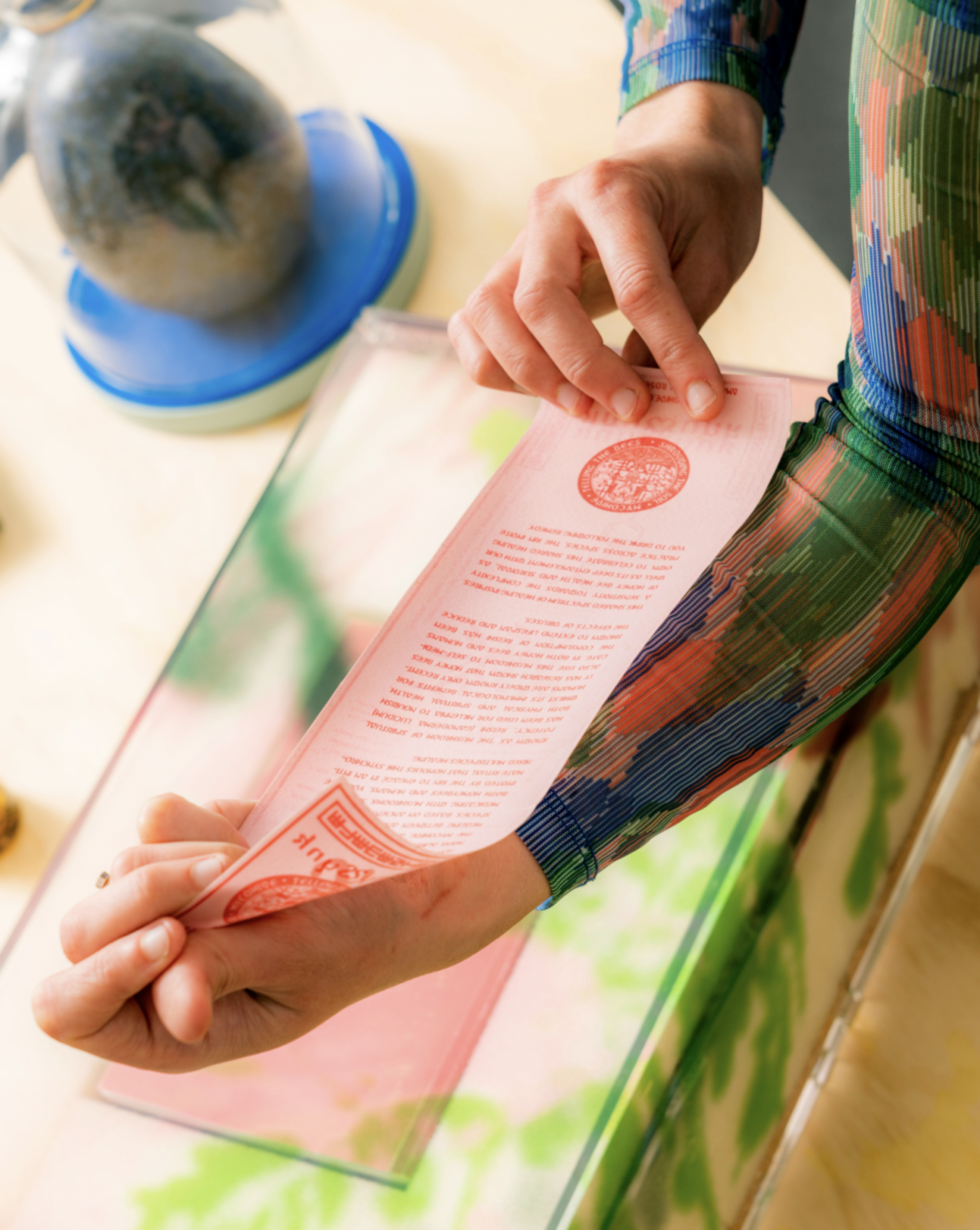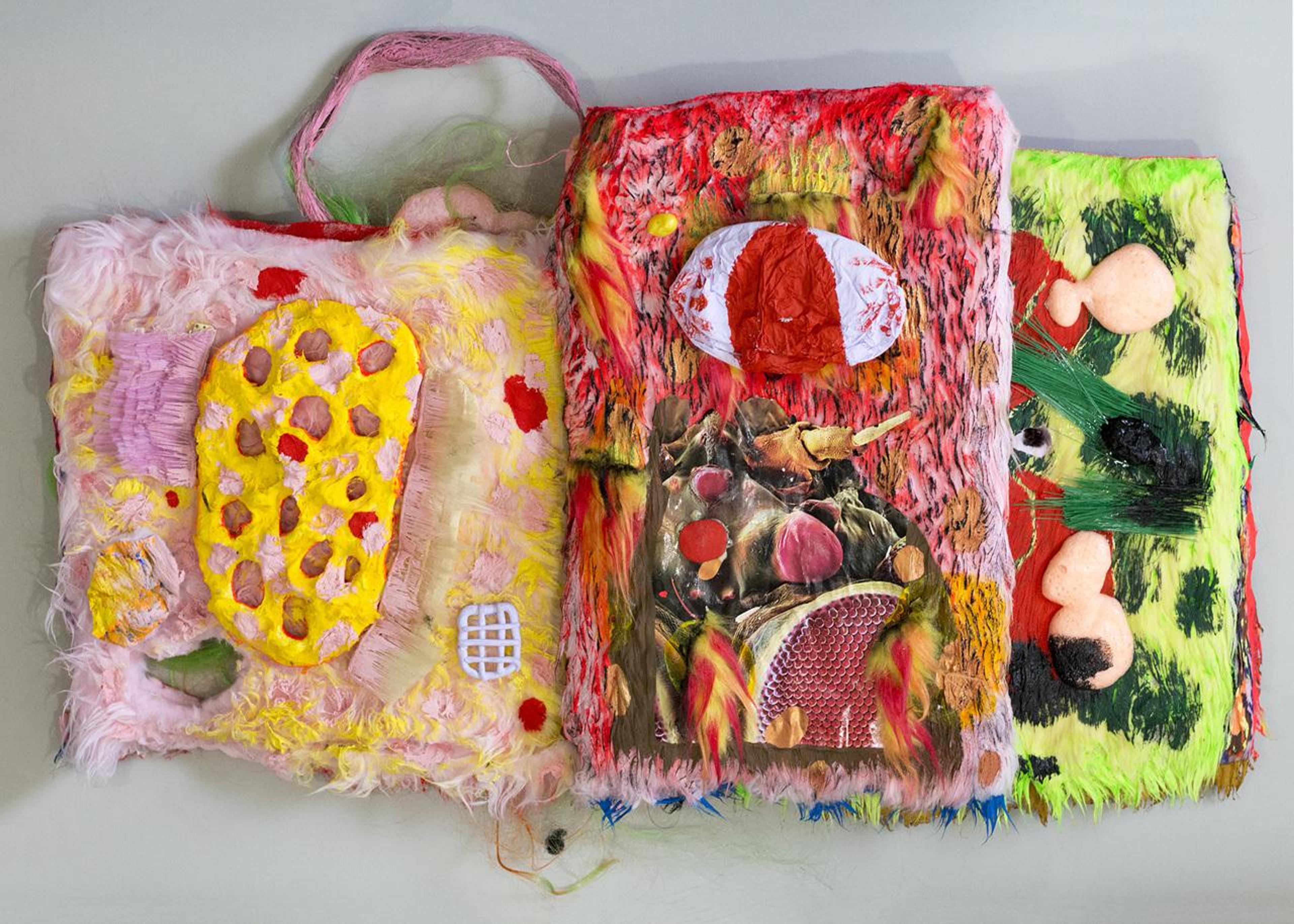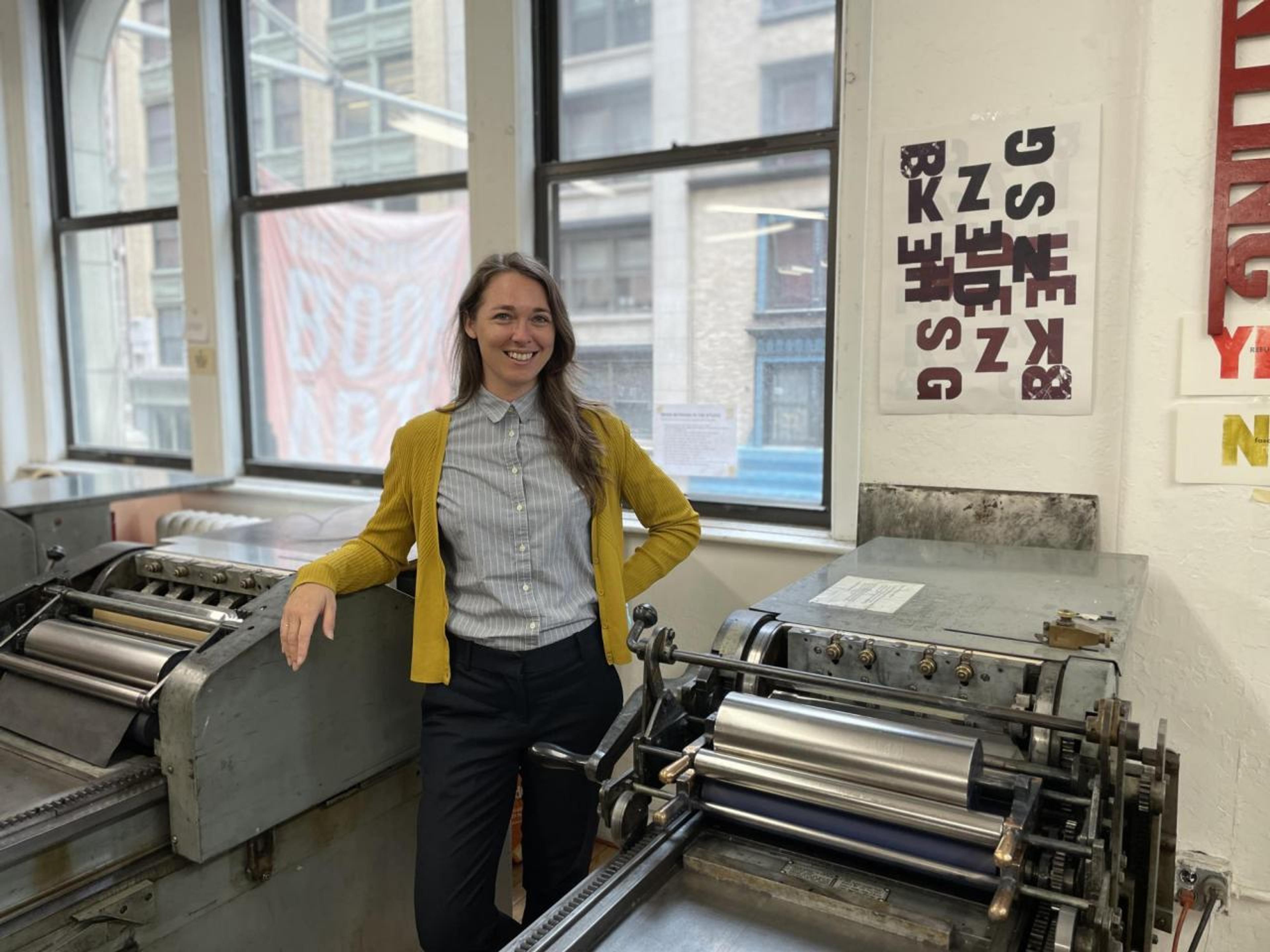For this installment of Shoptalk, Spike sat down with Corina Reynolds, the Executive Director of Center for Book Arts , the first nonprofit in the United States dedicated to exploring the book form as an art object in its own right.
In addition to offering bookmaking workshops, hosting lectures and performances, and staging exhibitions of artists' books, CBA has a book shop featuring hard-to-find titles from around the world, ranging from art books to meta-texts on the book form itself. Their research archive offers one of the most comprehensive overviews of art book history available, collecting books, periodicals, artist monographs, and exhibition catalogs all about the history and practice of making book art.
Alexandra Germer : As director of the Center for Book Arts, I’d be curious to hear how you define the “book arts”.
Corina Reynolds: Book arts encompass everything from conceptualising and creating a book, designing a book, to physically making it, and all of the detailed material processes that go into it as well. The term “book arts” is something that I think has been ambiguous for a while because there are all these different terms floating around – like art book, book arts, book works, artist books. They have a tendency to get mixed up a little bit. But the term “book arts” really refers to all of the practices related to the book as an art object.
AG: So you would place it very much within the art world rather than adjacent to it?
CR: I would say that the book arts are a part of the art world. There are the practices in which people are thinking more materially. When you’re thinking about a painter or a sculptor, they’re often concerned with materiality and form, the process and experience of making – Anselm Kiefer’s lead book sculptures are a great example. I think a lot of book artists consider their relationship to material as similarly central to their practice. At the same time, just as many book artists are thinking about ideas as the driving force of their work. This can be seen in the work of conceptual artists like Adrian Piper. My favourite books do a little of everything by using their materials and form to support the conceptual contents of the work, like Bent Onyx by Tauba Auerbach.
AG: I would also love to hear a little bit more about the move towards thinking about the artists’ books critically. CBA recently founded the Book Art Review .
As a culture, we need to expand our idea of literacy to include more aspects of the book, not just limiting ourselves to text and image.
CR: I’ve been in the book world for almost fifteen years now and one of the things that I’ve realised is that while there are some critical source books about artist books and their history, there really isn’t a strong, active critical conversation around artist books, or at least there hasn’t been in the last fifteen to twenty years. Part of my job at Center for Book Arts is to advocate for artists who are making books. I’m thinking a lot about how we help the broader art-going public understand more about artist books and how they intersect with the larger spheres of the art world. Have you ever been to the New York Art Book Fair?
AG: Yeah!
CR: So, you understand the experience of walking into PS1. There are three hundred vendors, they all have at least twenty books on their tables, some of them maybe fifty books on their table if they can squeeze them on there. You’re confronted with an unimaginable number of books. That whole range of books, I would say, situates itself within the term ‘art book’ – which is to say, a book related to the arts, maybe an exhibition catalogue or a book about an artist’s practice or documenting their work. It does also include artist books, which are books AS artwork (not documenting art).
Now, how do we look at these thousands of books at PS1 and decide which ones to collect? As a culture, we need to expand our idea of literacy to include more aspects of the book, not just limiting ourselves to text and image. If you are writing about artist books, how does the publisher enter into your piece of writing about these books? How much authorship do they have? When I’m holding a book in my hand, the questions I ask are: how much of this book is the artist, how much of this book is the designer, and how much of this book is the publisher?
With artist books it’s really interesting because this [publisher involvement and ownership] varies dramatically, as opposed to other forms of book publication. This certainly has an impact on how a reader of a review in BAR – or any critical piece of writing about a book – conceives of the book’s context. It can be 100% the artist from beginning to end, where they’re making the paper, designing the type, printing it by hand, binding it, and publishing it themselves and bringing it to the fair. But then, there are books where the layout, the decision to put this before that or to reorganise things, really does become a collaborative conversation with the publisher. The involvement of someone other than the artist in an artwork is something we’ve come to acknowledge as legitimate with artists who have really large practices. For example, acknowledging the role of the studio assistant and thinking a lot about who is the idea-maker.
Especially in the past year, we’ve had a lot of conversations around representation of different communities in the arts. For years, I’ve been talking about how fascinating it is that a majority of the artist bookmakers that I encounter in the art world are female yet a majority of the canonised artists in the artist book world are male. I had somebody ask me who the early Black female photobook artists were, and I’m thinking like, how do I figure this out? Asking questions like, why is that so hard to figure out, how do we build a network and framework of criticism that can support this, can aid in uncovering artists that have been overlooked or maybe have purposely found lesser known avenues for exposure? We’re thinking, how come the same type of artists are always being represented in these historical survey books? How come is it hard to get a review of an artist book published in a major art magazine? And also, how come that was so much easier in the sixties than it is now? Why is this book a book instead of an exhibition of photographs?
Spread from Cover to Cover by Michael Snow, Press of the Nova Scotia College of Art and Design (1975).
AG: Can I ask you about that book?
CR: Oh, yeah. Actually this is a recent reprint of Cover to Cover by Michael Snow. It was republished I think just last year or the year before by a publisher called Primary Information.
For this book in particular, it’s very easy to say this is an artist book; these photographs are in this book for a reason. Each photo propels you from page to page – their reason for existing is to bring you – as the title of the book says – from “cover to cover”. But sometimes when you get into the more general art book realm, it’s harder to answer that question of why is it a book, where maybe the book is just a container of information because it is essentially documenting an exhibition.
I was really surprised earlier in the pandemic, you know – I’m an obsessive book buyer. I’m on the internet trying to find some book and saw that PI republished this, and I bought a copy from the publisher. But in the process of researching the book I was shocked to see that for a brief moment it was being sold at Walmart. [laughter] Or it was Target?
AG: That’s amazing.
CR: That was kind of an exciting moment for me to see that.
AG: When you buy them, do you tend to read them cover to cover, like treat them like a normal novel, or is your relationship more exploratory?
CR: It really depends on the book. I think that this book, Cover to Cover, is interesting because it reads in both directions. It has this door on one side, and then it has another door on the other side. And there’s all these different indications of direction and view. It encourages multiple readings and different ways of turning through the book and looking at the narrative that a novel wouldn’t necessarily do. Which is just so fulfilling when the book asks for more investigation.
At Center for Book Arts we want people to sit there, handle the book, think about why it is a material object. What is the experience of turning through the pages?
AG: I also wanted to ask too about the exhibition that’s currently on view at CBA and the process of exhibiting book arts.
CR: In our central gallery at CBA, the current exhibition Interspecies Futures is about speculative zoology. It’s a group exhibition, organised by Oscar Salguero, of artist books that lean heavily on the genre of science fiction. Each of the books proposes a fictitious or novel relationship between humans and animals. Some are kind of funny, others are deeply thought-provoking.
The book format really works well for that in the sense that it has this authority. We all think about books as – or maybe I do in particular because I grew up with encyclopaedias – objects that have a certain level of intellectual authority. All of the artists in this exhibition are using the book format as a way of proposing these speculative post-human realities. In this exhibition, the viewer is invited to come in and handle and interact with each of the books. They take all different forms. Some of them are very handmade. You can tell that the artist was involved from the beginning to the end. One of them is 3-D printed. There’s all these different kinds of formats. The curator and the artists want the viewer to have a cover-to-cover experience with these objects.
This is maybe the hardest thing about exhibiting artist books – and maybe this is also why artists’ books don’t have quite as much, let’s say wall time or face time as other artistic mediums – they really are physical objects that need to be interacted with. The materiality is really important. At Center for Book Arts we want people to sit there, handle the book, think about why it is a material object. What is the experience of turning through the pages? How does the experience change from one end of the book to the other? Does the artist invite you to go forwards, backwards, jump around? We want to encourage the reader to have that interactive experience.
This can be difficult if something is a limited edition or a handmade artist book where the artist was involved from the level of producing the papers and things like that. I think this is one of the reasons museums aren’t exhibiting artist books quite as much as they could be, because you have several thousand people turning through the pages of the book, and paper is inherently a delicate medium. But those are the most rewarding books for the viewer because you have this full, even audible, experience of turning these interesting papers and materials, you have the tactile, physical experience of something. Sometimes you can even smell the book. And sometimes they’re just so delicate, handling a book like that is quite an experience.
At the same time, although inviting engagement with such fragile texts can be difficult, the depth of communication is so much deeper there, which is why CBA does encourage hands-on interaction with these rare and unique artist books. There are so many opportunities for intervention and communication.
AG: I hadn’t thought about that. Even if you were to have a digital copy or something, you would miss out on so much of the tactility.
CR: Exactly. I’ve been trying to think about how we can solve this problem with books that are really material-specific. I used to do a lot of artist book publishing and I love that tactile experience, thinking about every aspect of the material the same way that a sculptor would. If you get to interact with it, even better.
Spread from Big Book by Kari Cholnoky (2016)
One of my favourite artists is the painter Kari Cholnoky, who makes these artist books that are so bizarre and interesting. They’re sculptures in and of themselves. But they’re made out of all kinds of materials – from that fake fur that a football mascot might wear to strange cast pieces of foam to stickers, flannel blankets, all these things. But they’re also quite materially grotesque so they have all these layers of paint. As you’re turning through this book it’s like squishy, it’s rubbery, it’s huge, it feels like you’re holding a weird baby. At the same time, it’s kind of squeaking and creaking as you’re turning the pages. All of this, it’s really a big part of the experience interacting with the book. One of the things that I’ve been trying to solve with artists like this is, how do you provide that experience more widely? Do you create a facsimile? Is it even possible to create a facsimile of one of Kari’s books? Is it financially viable to do that?
AG: Is that something that the artist herself would have a say in?
CR: Yeah, that’s interesting. I think with Kari’s work, she’s the kind of artist that’s like, yeah everybody should just touch it. She really just wants people to pick it up and play with it. It would be great to have one of her books on permanent display, but the thing that becomes really challenging there is also figuring out how to support this artist financially by selling the work. A lot of people are afraid to talk about the financial aspects of the art world. Especially with larger edition artist books that sell very inexpensively, you really do require a publisher because it’s so expensive to produce an offset printed book. Versus one of Kari’s books, where maybe it’s not materially expensive to produce, but it takes a lot of her time and each is one-of-a-kind. There’s only so much intellectual and creative output that an artist can have.
AG: I was just talking to this magazine bookshop owner in Kiev, in Ukraine, and he was saying that he was encouraging a lot of his artist friends to start making zines as a way to supplement their income as artists.
CR: A lot of artists get into producing zines or producing small artist books that are fairly casually produced, something that they can make in their studio as a way of supplementing income, but the thing that we have to be aware of as collectors and consumers of artist books is really that while a zine is something that has low physical production value, maybe it’s printed off on their home laser printer on copy paper, but the amount of time invested by the artist in designing and creating that work and then physically printing it and folding it, and stapling or sewing it, and then cutting it and then distributing it, photographing it, there’s a lot of labour that goes into every step. I think that we have to realise that when an artist charges ten or twelve dollars for a zine that’s say, three sheets of folded paper, there’s a reason for that. We really need to think about how we can support these artists so that they can continue their work and increase their creative output, but also grow as artists and understand their practice in a new way.
CBA Executive Director Corina Reynolds in the letterpress studio.
Last time, we chatted with Readellion , Ukraine’s first magazine shop.
CORINA REYNOLDS is the Executive Director of Center for Book Arts , the first nonprofit in the United States dedicated to exploring the book form as an art object in its own right.
ALEXANDRA GERMER is Spike’s online editor emeritus. Editorial support by MIKAYLA UBER.


